How to Spot Original Yixing Pots and Buying Guide: The Ultimate Guide
Yixing teapots: What are they and why are they so unique?
Yixing pots (also called Yixing teapots or Zisha teapots) are legendary among tea drinkers. These small, unglazed clay teapots originate from the city of Yixing in Jiangsu Province, China, famous for its unique, mineral-rich clay. The tradition of making Yixing pots began in the Ming Dynasty (1368–1644), and over time, they have become highly valued for their beauty, craftsmanship and ability to enhance the flavor of tea. Why are Yixing pots special? It all has to do with the clay. Yixing clay, or Zisha (紫砂), is a rare form of porous clay that will absorb some of the tea is brewed in it, developing a patina and improving the taste of brewed tea over time. For this reason, many tea drinkers will dedicate a single Yixing pot to one type of tea (usually oolong, pu-erh, or black tea) that benefit from the clay’s subtle influence on the brewed tea. Some Yixing pot facts: Attribute | Description ———-|———— Origin | Yixing, Jiangsu Province, China Material | Zisha clay (including the subtypes Zisha, Hongni, and Duanni) First produced | Ming Dynasty (14th–17th century) Unique property | Porous clay absorbs tea flavors, enhancing taste over time Common use | Brewing Chinese teas, especially oolong, pu-erh, and black teas Collectible value | High, especially for antique or artist-signed pieces Yixing pots are not only functional teaware; they are also works of art. Skilled artisans craft each pot by hand, often signing their work with a seal or mark. The best Yixing pots achieve harmony between form and function, beauty and utility. That’s why collectors and tea lovers place so much value on authentic Yixing pots—and why some teapots sell for thousands of dollars.
Why Do Tea Lovers Seek Authentic Yixing Pots?

“A good Yixing pot is not just a vessel for tea—it’s a companion for a lifetime of tea drinking.” — Chinese tea proverb In the world of tea, few objects inspire as much passion and reverence as the authentic Yixing pot. But with their popularity comes a flood of imitations and mass-produced fakes. That’s why learning how to identify and buy authentic Yixing pots is essential for anyone who wants to enjoy the true magic of this traditional teaware.
Key Features of Authentic Yixing Pots
When it comes to how to identify and buy authentic Yixing pots, understanding the key features of genuine Yixing teapots is crucial. The market is flooded with imitations, so knowing what to look for can save you from disappointment and ensure you get a pot that will truly enhance your tea experience.
Yixing Clay Key Features
The heart and soul of every YiXing pot is its clay. Authentic YiXing teapots are made from Zisha clay – a unique blend of minerals found only in the YiXing region. This clay is what gives the pots their legendary ability to absorb and enhance tea flavors. Types of YiXing Clay Clay Type | Color/Appearance | Tea Pairing | Notes ———-|——————|————|—— Zisha | Purple-brown | Oolong, Puerh | Most common, highly prized for versatility Hongni | Red | Green, Black | Finer texture, often used for delicate shapes Duanni | Yellow-beige | White, Green | More porous, ideal for lighter teas How to recognize real YiXing clay:
Quick tip: If you gently tap the body of a real YiXing pot with its lid, you’ll hear a clear, bell-like sound. Fakes often sound dull or muted due to inferior materials.
Craftsmanship and Artist Marks

The Yixing teapot is an art object, molded by human hands. As a result, the best Yixing pots are not cookie-cutter imitations. Here are some features to identify a craft creation versus an ordinary teapot: Crafts: Many Yixing pots have been made by hand rather than wheel thrown pottery. There are small irregularities. No two handmade Yixing pots would ever be truly alike. While the pot’s body, lid, and spout should all fit perfectly with one another, you may notice tiny tool marks or slight asymmetry that are clues to human craftwork. Factory pots: A great majority of Yixing pots are manufactured in factories in China. Because factory pots are often mass-produced from molds and machines, they may display uncanny symmetry and precision, but lack idiosyncratic character. Their clay may be too smooth or fine-grained. Compared to handmade pots, they may also feel heavier and colder. Artist marks and seals Aspiration to create high art and the integration of beauty in a functional object Authentic Yixing teapots are usually marked with a seal or stamp of some kind. Artist marks are usually: on the bottom of the pot, or sometimes inside the lid. carved or stamped into the clay before firing. Artist marks often indicate an individual artist or workshop. Pots by some famous artists can be highly collectible, and can substantially increase the value and resale value of a pot. “The seal is the signature of the artist, a mark of authenticity and pride in their craft.” What to look for: Marks that are sharp and clear. Marks that are carved into the raw clay, not stamped over a glaze. Visual similarity between the style of the artist’s mark and the style of the pot itself. Documentation or certificates, for higher-value Yixing teapots.
Functionality and Testing
A genuine Yixing pot isn’t just beautiful—it’s designed for perfect tea brewing. Here are some practical tests you can perform: Water Pour Test: Fill the pot with water and pour. The stream should be smooth and steady, not dribbling or splashing. The lid should fit snugly, with minimal wobble. If you cover the air hole on the lid, the flow should stop immediately—this shows the pot is well-made. Lid Fit and Air Hole Test: The lid should sit flush with the pot, with no gaps. The air hole (usually on the lid) should be cleanly drilled and allow for easy pouring control. Smell and Sound Checks: Smell the empty pot. Authentic Yixing clay has a neutral, earthy scent. If you detect chemical or artificial odors, it’s likely a fake. Tap the pot gently with the lid. As mentioned earlier, a clear, ringing sound is a good sign of quality clay and craftmanship. Summary Table: Authentic Yixing Pot Checklist Feature | What to Look For ——–|————— Clay | Natural, earthy color; slightly rough texture Craftsmanship | Handcrafted feel; artist’s seal or mark Functionality | Smooth pour; snug lid; clear sound when tapped Smell | Neutral, earthy scent (no chemicals) By focusing on these key features, you’ll be well on your way to identifying and buying an authentic Yixing pot that will serve you for years—and many cups of tea—to come.
How to Spot Fake Yixing Pots
The popularity of Yixing teapots has led to a flood of imitations and low-quality knockoffs. For anyone serious about learning how to identify and buy authentic Yixing pots, knowing the telltale signs of a fake is just as important as recognizing the real thing. Counterfeit pots not only lack the unique brewing qualities of genuine Yixing clay, but they can also contain harmful chemicals or glazes.

Counterfeit and Poor-Quality Yixing Pots: How to Identify Them
Red Flags When Shopping for Yixing Pots
| Red Flag | What It Means |
|---|---|
| Too-good-to-be-true prices | Authentic Yixing pots are never dirt cheap. |
| Unclear or missing provenance | Trusted sellers should have a good understanding of where the pot comes from and who the artist is. |
| No returns accepted | Reputable sellers stand behind the items they sell. |
| Over-the-top sales tactics | Beware Of Time Pressure. |
| No high-quality photos or videos | When you purchase online, the best thing that you need during purchasing is transparency. |
Data Source: Federal Trade Commission (FTC) guidance on high-pressure sales tactics in online marketplaces – Recognized markers of potential scams or manipulation.
URL: https://www.consumer.ftc.gov/articles/how-recognize-and-avoid-fake-online-stores
Data Source: Chinese Consumer Associations – Best-practice consumer buying guide for traditional crafts (including Zisha), advising skepticism toward urgency-based marketing.
URL: http://www.cca.org.cn/
Show case of a collector: they got a “Yixing” pot from online sources at $20 right away with the seal of a renown Yixing-ware artist, but after they received it, they found it had a chemical smell, shiny surface in the interior, and the lid was not fitting. After contact with the seller, this show belongs to, there is no return policy, or provenance proof. If things seem too good to be true, they often are. Quick Tips for Avoiding Fakes Ask questions: Don’t be shy about asking the seller what they know about the pot’s clay, artist, or origin. Ask for close-up photos: Is there a clear image showing the clay texture? Artist’s mark? Interior? Buy from well-known shops and galleries: Or, if you’re able, buy directly from the artist. Trust your senses: If the pot looks funny, smells funny, or feels funny, walk away. “A genuine Yixing pot is an investment in your tea journey. Don’t settle for less.” By staying alert to these warning signals, you’ll protect yourself from disappointment and ensure your collection features only the finest, most authentic Yixing teapots.
Where and How to Buy Authentic Yixing Pots
Finding a genuine Yixing pot is a rewarding journey, but it requires patience, research, and a discerning eye. The market is global, and while there are many reputable sellers, there are just as many opportunists hoping to pass off fakes as the real deal. Here’s how to navigate the world of Yixing teapots and make a purchase you’ll never regret.
Trusted Places to Buy Authentic Yixing Pots

Questions to Ask Before Buying This way, you can tell if you like the stuff that seller is selling. Is the pot genuine Yixing? Ask about the origin of the clay. Real zisha clay only comes from the Yixing area. Who is the artist? Ask for the artist’s name and background as well as whatever documentation is available. A certificate of authenticity is a must for high-priced pots. Can I see close-up photos or videos? Request close-up photos of the clay’s texture and color, artist’s seal, and pot interior. Videos of the pot in use can also help determine the quality of the pot. What is the return policy? A reputable seller will offer a proper return or exchange policy, especially for online sales. Is there a proof of authenticity certificate? In the case of collectible or expensive pots. The certificate should correspond with the artist’s mark and describe the clay and creation process.
| Step | Item to Look For | Source |
|---|---|---|
| trusted shop, gallery or directly from artist | Clay | genuine Zisha (or Hongni, Duanni) from Yixing |
| Artist | named, seal, paper certificate | |
| Photos/Videos | clear photos of clay and seal and interior of pot | |
| Return Policy | reasonable and clear | |
| Certificate | yes, if high value or collectible pot |
Data Source: China Arts and Crafts Association Certified Artists Register & National Intangible Cultural Heritage Database for official Zisha practitioners
URL: http://www.ihchina.cn/
Data Source: Guidelines from China Quality Certification Center (CQC) and Taobao “Yixing Clay Certification” guide for visual inspection and authenticity
URL: http://www.cqc.com.cn
Red flags to keep an eye on. Price that’s too good to be true: Authentic Yixing pots—especially handmade ones—are never basement bargain priced No artist information: if the seller cannot even name the artist of the pot it is not a good sign Define vague The pots are clay and I want details about where clay came from and who made the pot. No return policy: This is a huge red flag especially when purchasing online. Real Life Example An English tea-lover in London decided she wanted to purchase a Yixing pot over the internet. She found two pots online of nearly identical appearance—one through a reputable tea store priced at $120 and another at an auction site for $25, shipping included. The $25 pot had no artist’s mark, no listing for the clay from which it was made, and the seller refused to answer any of her questions. She decided to buy the $120 pot. It came with a certificate, a biography of the artist, and its fit and finish are impeccable. With its years of use, the pot has developed a fantastic patina and continues to brew fantastic tea: a testament that doing your own research yourself pays off. Purchasing an authentic Yixing pot is about so much more than the object: it’s about connecting to alineage, supporting craftsmanship, and taking your tea experience to another level. Be patient, ask questions, and listen to your gut. The right pot will reward you for years to come.
Caring for Your Yixing Pot
Once you’ve learned how to identify and buy authentic Yixing pots and eventually brought one home, you’re still not done. What you do with your Yixing pot once you have it is just as important as how you select it in the first place. Yixing pots are unlike any other teaware. The porous clay absorbs the qualities of the tea, creating an unmistakable patina and enhancing the depth of flavor in every pot brewed. Here’s how to take care of your newfound treasure.
Seasoning and Cleaning Your Yixing Pot
“Seasoning” is the term we use to describe the process of getting a new Yixing pot ready for use. This step is especially useful with good-quality authentic unglazed zisha pots to remove any last traces of clay dust and open the pores of the clay. Rinse the pot with warm water. Never employ soap or detergent — the clay will absorb the stuff, and you’ll taste it in your tea. Boiling a pot in clean water. Place the pot (and its lid) in a pot of water (make sure the pot is fully submerged). Bring to a gentle boil for 30–60 min. This process helps to draw out any remaining clay dust or impurities. Brew a “sacrificial” batch of tea. Add the type of tea you’ll dedicate to the pot. Steep for an hour, then dump. Repeat once or twice. The clay will start to take on the tea’s aroma and flavor. Rinse and let air dry. Let the pot air-dry naturally with the lid off in a well-ventilated place. Cleaning tips: Rinse with hot water after every use. Never use washing up liquid and/or abrasive sponges. Simply rinse pot and lid with warm water, and allow them to air dry. Do not leave tea leaves in for long. Try to avoid leaving the leaves to stew in the pot for too long as this may cause tea stains to form or give off a bad odour. Do not subject rapidly to changes in temperature. Don’t pour boiling water into a cold pot, which can lead to cracking. Store with the lid off. This will prevent mold and allow the pot to breathe. Table: Do’s and Don’ts for Yixing Pot Care Do’s | Don’ts —–|—— Rinse with hot water only | Use soap or detergent Season before first use | Brew different teas in the same pot Store with lid off | Leave tea leaves in the pot overnight Dedicate one tea type per pot | Expose to sudden temperature changes Let
Yixing teapots FAQ
Even those who have mastered scouting for and buying a genuine Yixing pot have lingering questions. The world of Yixing teapots is one filled with tradition, subtlety and intrigue. The following are answers to some of the most frequently asked questions and practical guidance for experienced and novice collectors alike.

Conclusion: Enjoying your genuine Yixing pot
Owning an authentic Yixing pot is not simply gaining a piece of teaware. It’s a chance to take part in centuries-long tradition, to savor tea in its fullest potential, and to marvel at the artistry of adept hands. By knowing how to recognize and how to buy real Yixing pots, you’re not only protecting yourself from scams and remorse; you’re stepping into a richer and more rewarding enjoyment of tea. Let’s recap the takeaways: Know your clay: Genuine Yixing pots are made from Zisha clay, which should have natural, earth-tone colors and a slightly grainy surface. The clay’s unique properties will help intensify the flavor of your tea — and build a beautiful patina over time. Check for craftsmanship: Look for signs of hand-making, such as slight imperfections, a lid that fits snugly, and a distinct artist’s seal. These are clues indicating authenticity and good workmanship. Test functionality: A genuine Yixing pot should pour smoothly, assemble perfectly, and smell neutral and earthy. Be sure to use your senses of sight, touch, hearing, and smell. Get it where it’s guaranteed: Online or offline, shop from tried-and-true sellers, whether they’re respected shops, galleries, or straight-from-artist dealers. Ask plenty of questions, request documentation, and take your time making a purchase. Take care of your pot: Season your Yixing pot before you start using it, dedicate it to a single type of tea, and wash it carefully with hot water only. When you do, your pot will be an even better companion through the years. Your journey doesn’t stop after you buy a pot, in fact, it’ll grow with you as you brew tea with it, building a history between you and your pot as it imbibes the spirit of your favourite leaves with ever brew. It’s even not uncommon for collectors to find themselves ever sinking deeper into the world of Yixing having purchased their first teapot, and seeking out new shapes, clays and artists as a result. The yixing buying experience never fails to take you on a new adventure, and each pot is a new chapter in your tea story. “In every cup of tea brewed in a Yixing pot, you taste not just the leaves, but the history, the earth, and the hands that shaped the clay.” – So, rest easy, trust your gut and have fun! The right Yixing pot unfailingly enriches tea experience, nurtures a deeper love of craftsmanship and forges an palpable connection to the rich heritage of Chinese tea culture.




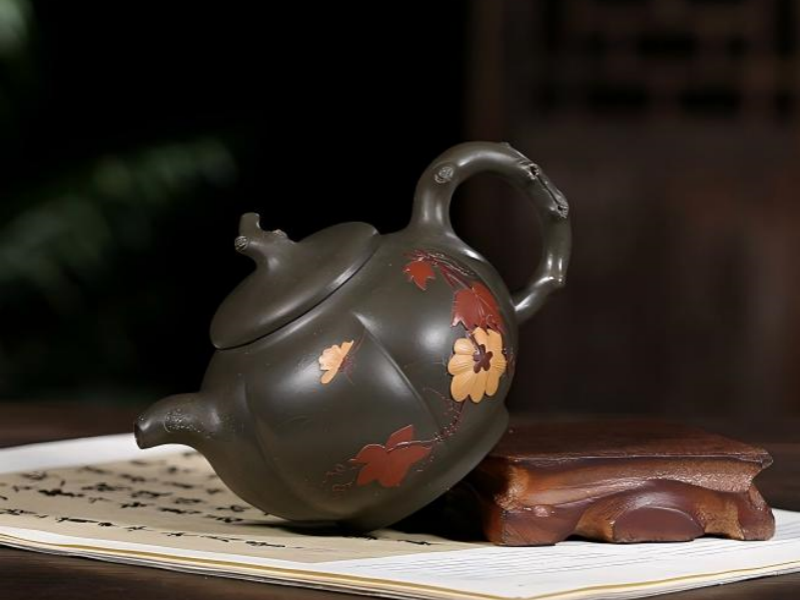



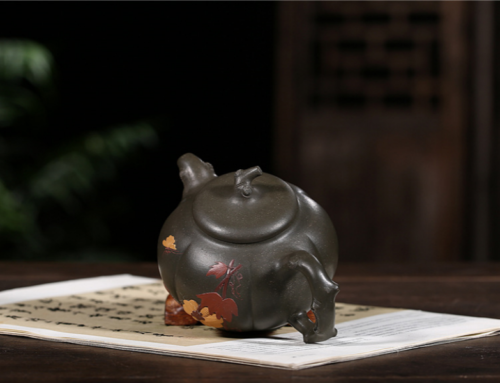
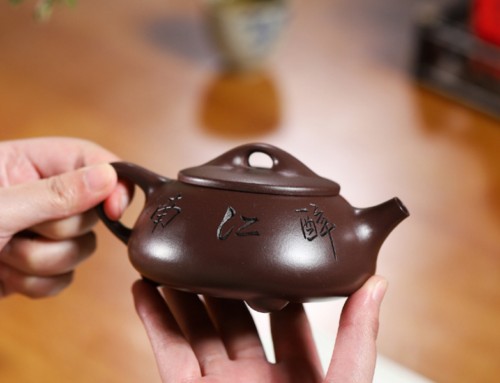



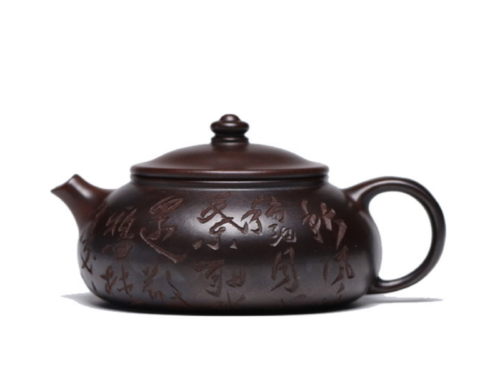 Lotus Flower - Traditional Zisha Clay for White Tea Enthusiasts | Yserene
Lotus Flower - Traditional Zisha Clay for White Tea Enthusiasts | Yserene 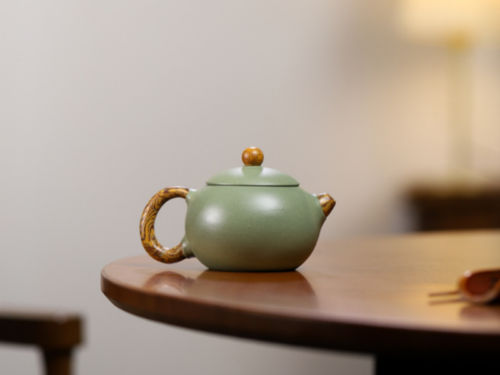 Bamboo Grove - Authentic Purple Clay for Green Tea Brewing | Yserene
Bamboo Grove - Authentic Purple Clay for Green Tea Brewing | Yserene